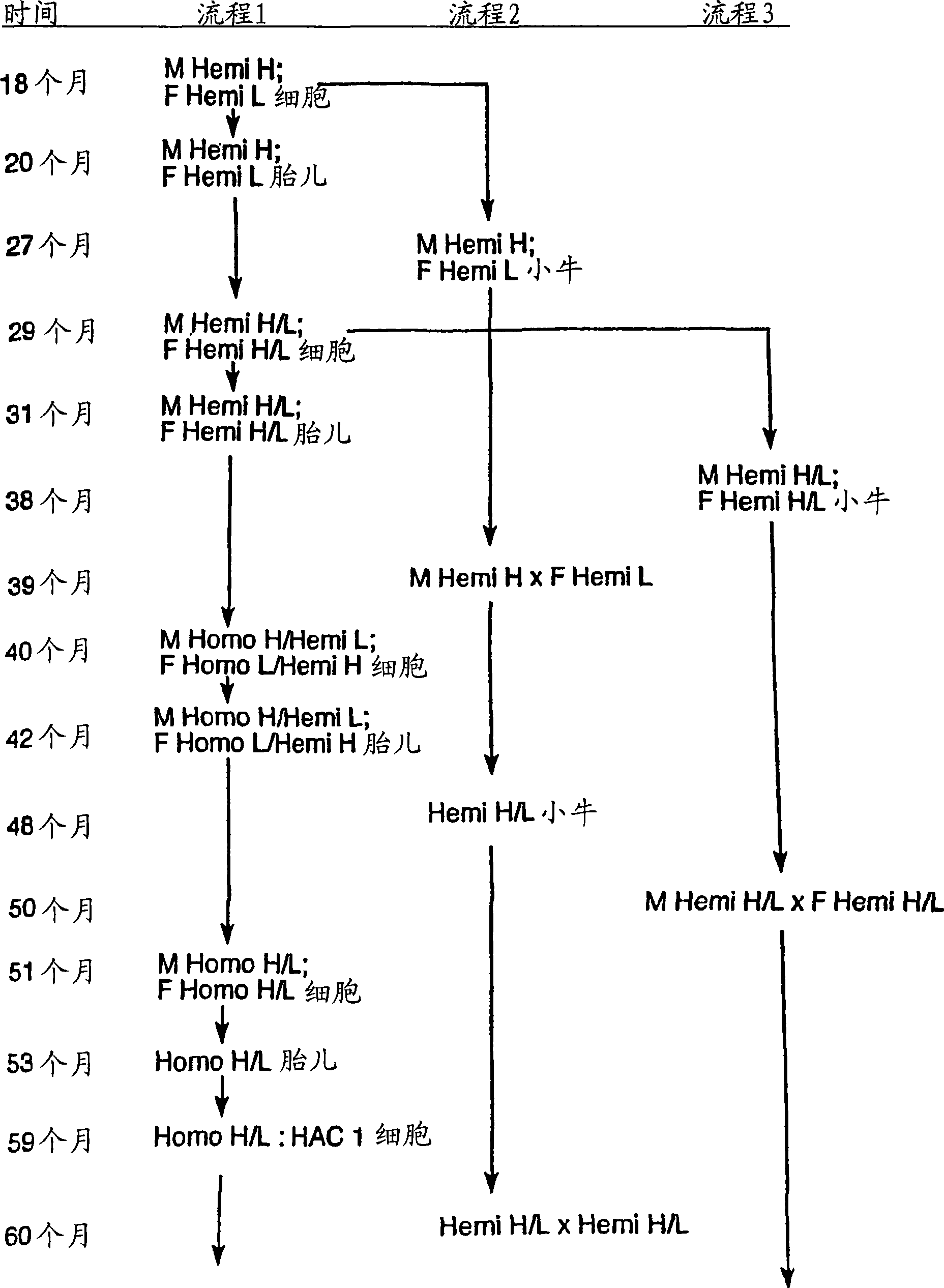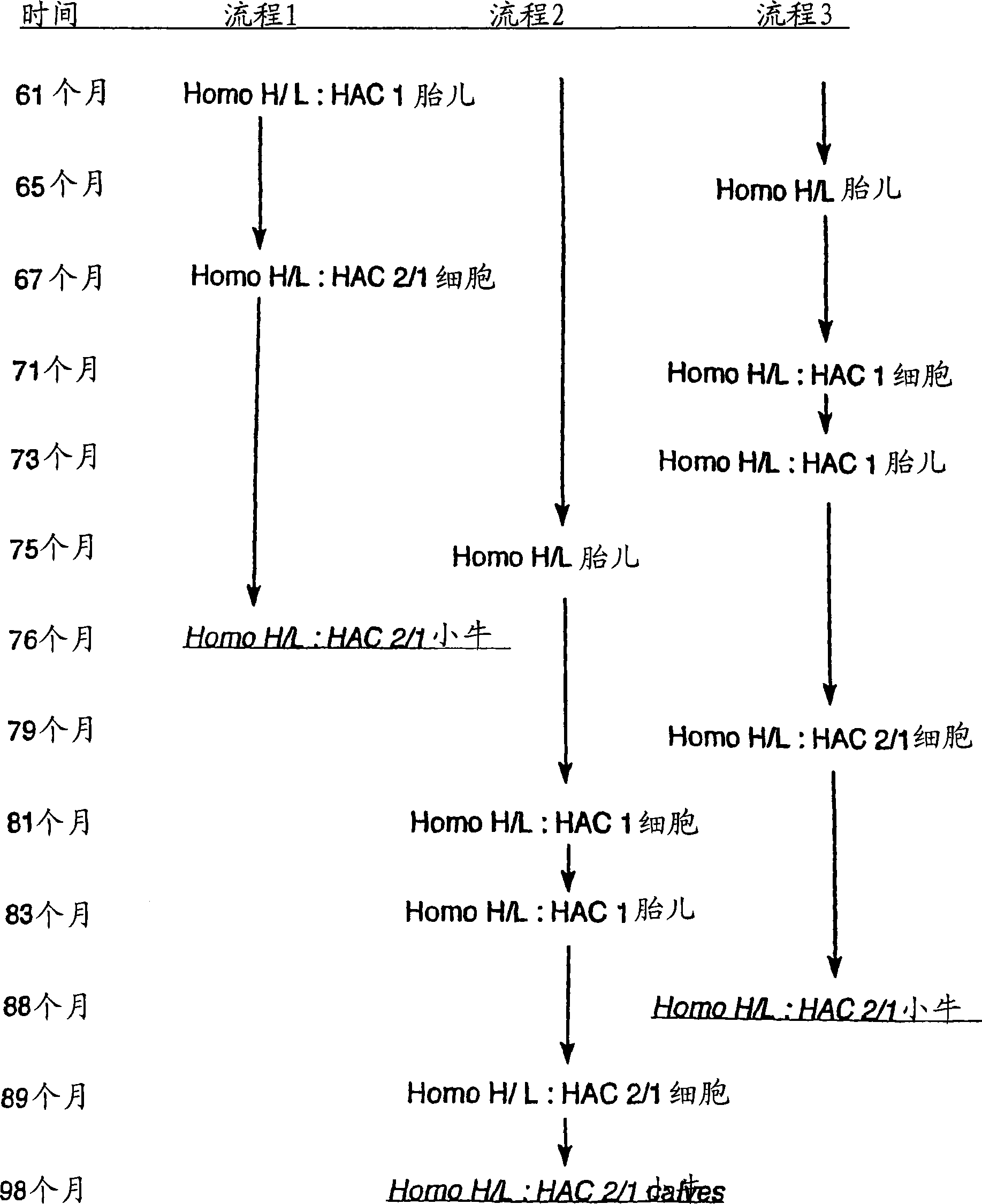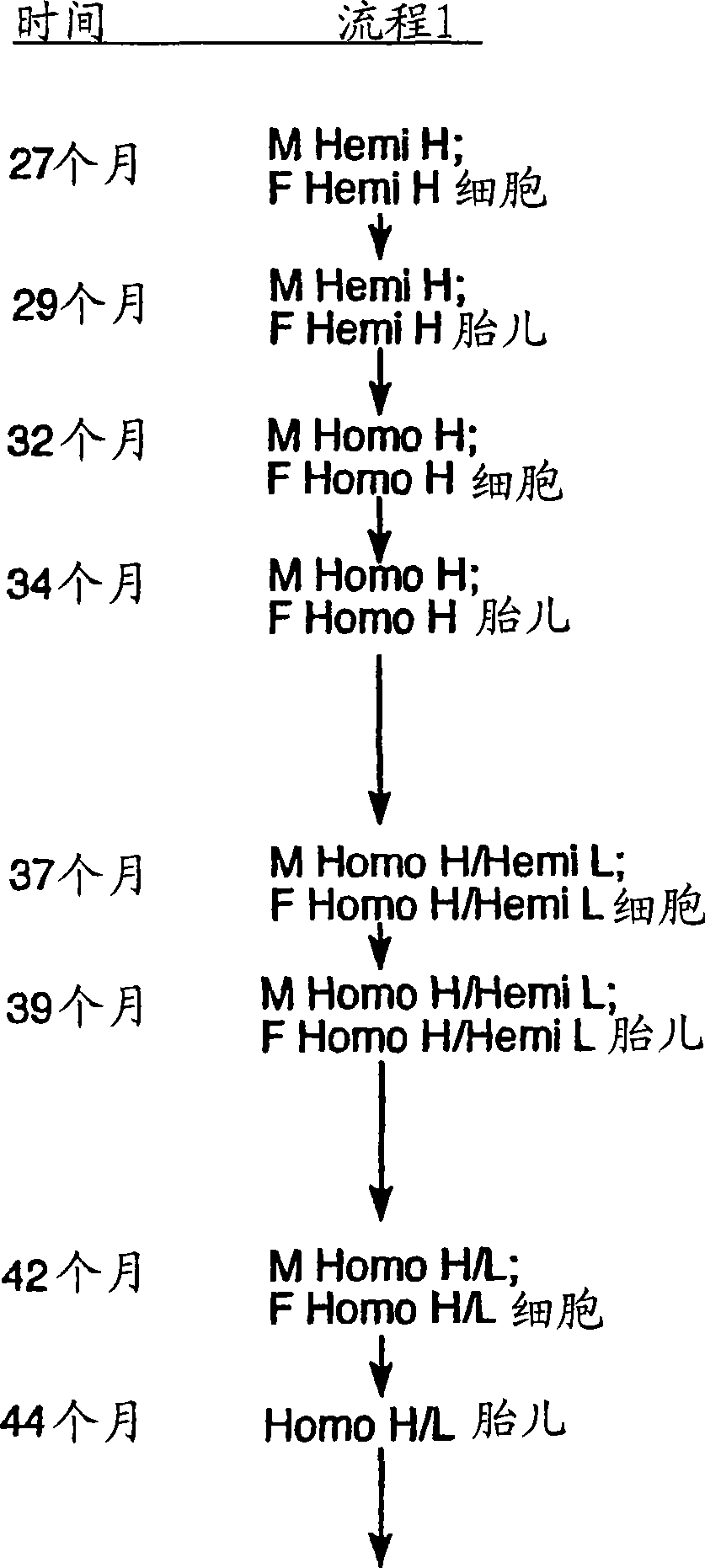Transgenic ungulates having reduced prion protein activity and uses thereof
A prion protein, prion technology, applied in genetic engineering, plant genetic improvement, application, etc., can solve the problem of lack of knockout vector and/or nuclear transfer method, etc.
- Summary
- Abstract
- Description
- Claims
- Application Information
AI Technical Summary
Problems solved by technology
Method used
Image
Examples
Embodiment 1
[0190] Example 1: Transgenic ungulates with reduced prion protein activity
[0191] Bovine fibroblast clones in which both alleles of the PrP locus were mutated were produced by sequential homologous recombination. will be used to produce PrP homozygous DNA constructs for knockout cells were used to prevent transcription of functional full-length PrP mRNA. Consequently, the resulting immature PrP transcript lacks a functional coding region. First, a DNA construct containing the neo gene (ie, the PrPKOneo vector) was electroporated into a bovine fibroblast cell line, and neomycin-resistant clones were then isolated. According to PCR analysis, homologous recombination occurred in exon 3 in some clones. Thus, bovine fibroblasts were generated in which one allele in the PrP locus was mutated. From hemizygous mutant (hem-PrPKO) fibroblasts, fetuses in which one allele of the three PrP loci were mutated were generated and hemizygous fibroblast lines were re-established. Then, a...
Embodiment 2
[0213] Embodiment 2: Import and rearrangement of HAC
[0214] Summary of methods used to insert HACs
[0215] For the production of ungulate alleles (such as cattle) that have mutations in one or both alleles of the prion gene and express heterologous antibodies, conventional methods can be used to insert heterologous antibody-expressing nucleic acids (such as HAC) into in cells. For example, the HAC can be inserted before or after one or both alleles of the prion gene are inactivated. One or more endogenous antibody genes in the cell are also mutated, if desired. The cells are then used in conventional nuclear transfer procedures to produce the desired transgenic ungulates, as described in more detail below.
[0216] In fact, male and female bovine fetal fibroblast cell lines containing human artificial chromosomes (eg, #14fg., #2fg., and #22fg.) were obtained and cloned calves were produced from these cell lines.
[0217] For example, simultaneous or sequential insertion...
Embodiment 3
[0318] Example 3: Xenoantibody-producing transgenic ungulates with mutations in one or more endogenous antibodies
[0319] In ungulates expressing xenogeneic antibodies and having mutations in prion genes as described in Example 2, endogenous antibody levels can optionally be reduced by mutating one or more endogenous antibody genes. Express. The number of B cells expressing a desired xenogeneic antibody (e.g., a human therapeutic antibody) by increasing the number of functional xenogeneic immunoglobulin heavy or light chain genes relative to the number of functional endogenous heavy and light chain genes will increase.
[0320]To produce these transgenic ungulates, ΔHAC or ΔΔHAC transgenic ungulates can be made to contain mutations in one or more alleles of endogenous immunoglobulin chains (e.g. μ heavy chains or lambda or kappa light chains) mating of transgenic ungulates. If desired, the resulting transgenic ungulate can be associated with (i) one or both alleles of an e...
PUM
 Login to View More
Login to View More Abstract
Description
Claims
Application Information
 Login to View More
Login to View More - R&D
- Intellectual Property
- Life Sciences
- Materials
- Tech Scout
- Unparalleled Data Quality
- Higher Quality Content
- 60% Fewer Hallucinations
Browse by: Latest US Patents, China's latest patents, Technical Efficacy Thesaurus, Application Domain, Technology Topic, Popular Technical Reports.
© 2025 PatSnap. All rights reserved.Legal|Privacy policy|Modern Slavery Act Transparency Statement|Sitemap|About US| Contact US: help@patsnap.com



